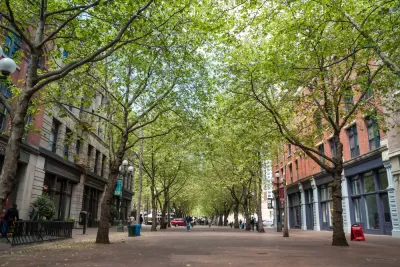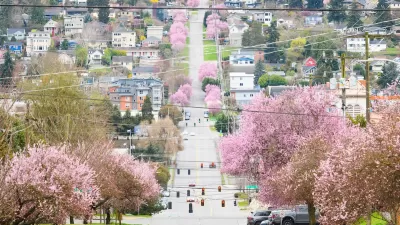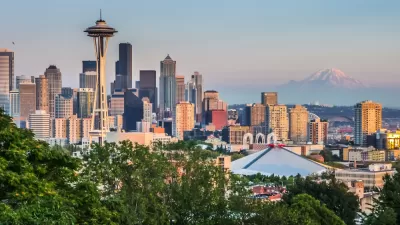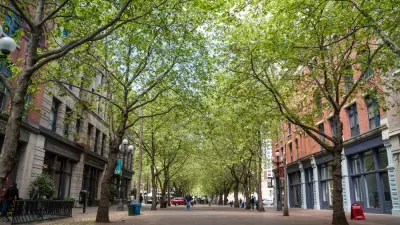Parts of the city desperately need more trees, but some residents worry about the long-term effects of tree planting in neighborhoods.

Carolyn Bick reports that efforts to improve Seattle’s tree protections and increase tree canopy coverage have been met with resistance from residents in South Seattle neighborhoods.
These lower-income communities of color have fewer trees than other parts of Seattle, and the areas have some of the worst health outcomes in the city. Research has shown a clear relationship between green space and public health, and South Seattle residents say they want more trees. But they fear the gentrification that could follow from such improvements.
Residents also have been critical of advocacy and outreach efforts. "For too long, they say, white-led environmental organizations have come into South Seattle communities of color with the assumption that they know better than the residents themselves what people there need,” says Bick.
Community advocates say that the city and advocacy groups need to better understand the perspectives and situations of local residents. "Ultimately, [Andrew] Schiffer said, gentrification is happening; and while greening the area may be making it more attractive for wealthy people and developers, the best way to ensure the existing community isn’t displaced is by making sure the community is involved," notes Bick.
FULL STORY: South Seattle residents want greener neighborhoods — without more gentrification

Alabama: Trump Terminates Settlements for Black Communities Harmed By Raw Sewage
Trump deemed the landmark civil rights agreement “illegal DEI and environmental justice policy.”

Planetizen Federal Action Tracker
A weekly monitor of how Trump’s orders and actions are impacting planners and planning in America.

The 120 Year Old Tiny Home Villages That Sheltered San Francisco’s Earthquake Refugees
More than a century ago, San Francisco mobilized to house thousands of residents displaced by the 1906 earthquake. Could their strategy offer a model for the present?

In Both Crashes and Crime, Public Transportation is Far Safer than Driving
Contrary to popular assumptions, public transportation has far lower crash and crime rates than automobile travel. For safer communities, improve and encourage transit travel.

Report: Zoning Reforms Should Complement Nashville’s Ambitious Transit Plan
Without reform, restrictive zoning codes will limit the impact of the city’s planned transit expansion and could exclude some of the residents who depend on transit the most.

Judge Orders Release of Frozen IRA, IIJA Funding
The decision is a victory for environmental groups who charged that freezing funds for critical infrastructure and disaster response programs caused “real and irreparable harm” to communities.
Urban Design for Planners 1: Software Tools
This six-course series explores essential urban design concepts using open source software and equips planners with the tools they need to participate fully in the urban design process.
Planning for Universal Design
Learn the tools for implementing Universal Design in planning regulations.
Clanton & Associates, Inc.
Jessamine County Fiscal Court
Institute for Housing and Urban Development Studies (IHS)
City of Grandview
Harvard GSD Executive Education
Toledo-Lucas County Plan Commissions
Salt Lake City
NYU Wagner Graduate School of Public Service





























